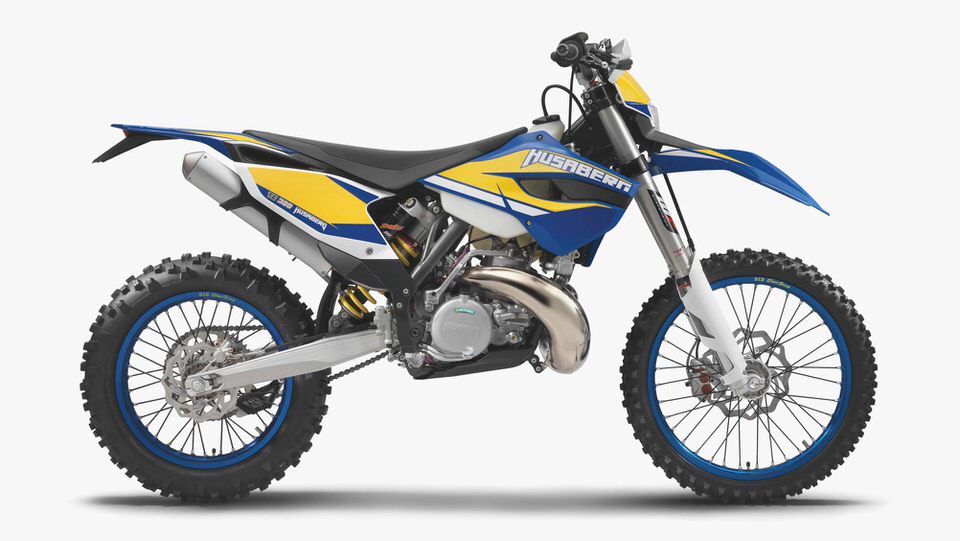
2013 Husaberg TE300 Review
2013 Husaberg TE300 Test
Testing The Graham Jarvis Race Bike
Is there any motorcycle more ubiquitous to the off road world than the 300 two stroke? It is the every-man’s enduro bike. It is so much a part of our collective world and knowledge that I find myself challenged to come up with anything new to say about it.
In the guise of the Husaberg TE, this is an all new bike, one we have never ridden before. Still, in the bigger picture, not much has changed in the basic technology.
We have tested at least three 300s in the last year. Looking back, there was our 2008 KTM 300xcw bike build, the 2012 TE300 I rode at Romaniacs and of course the 2012 Gas Gas XC300 test bike. While they seem like vastly different bikes, but the commonalities are stronger than the differences are. The same is true for the new Husaberg.
Other than suspension and a few details, you could almost lump them all together.
This is not a bad thing. The 300 has always been a great platform and a strong American seller. I think one of the real reasons is they are just so easy to ride. The 300 favors the trail rider and the smooth racer.
While I raced 300′s for a number of years, I was always torn between it and the 250. A few years ago the 300′s were not in favor with the top racers. I recall asking David Lyke about why none of the top riders chose the big two stroke to race.
He explained that the challenge for aggressive riders is the 300 is a little slow to respond, then hits too hard. He always felt the 250 was actually easier for the top riders to use.
That sentiment has changed some in recent years, as more riders have moved to the 300, particularly among the extreme enduro crowd. I think some of the subtle advances in the motor packages from all manufacturers make the bikes a bit easier to race. I also think that many riders have adjusted their riding style to fit the bike and take advantage of its strengths.
When it comes to talking about the 2013 version on the Husaberg, there are lots of details to discuss. The biggest is the suspension package. Up front the Bergs are the first production bike to get the all new WP 4CS (four chamber) fork. This 48mm fork has an entirely new internal design that is intended to bridge the gap between the current open chamber and closed chamber designs.
It is also said to be easier to service than the closed chamber fork.
In stock form the forks show some real promise. In most trail situations they work very well. They are plush, controlled and soak up most bumps. Overall feel is somewhere between the other current designs.
The forks are just a tad harsh on small stuff. They do particularly well on medium size hits. But they don’t have enough rebound force (spring) to handle back-to-back hits as well.
Larger riders will need bigger springs.
They are stiffer and more race competent than the stock open chamber forks on the KTM XCW/EXC models. For some comparison, we have tested the FE350 and the 350exc together, the same bikes with different forks. The 4CS is better than the stock EXC open chamber set up. But with a spring and oil adjustments, the open chamber forks go back into the lead. We have not had time to make any changes to the 4CS forks yet.
For now, I say the 4CS shows potential, but I am not ready to ditch my favorite open chambers just yet for them.
The Husaberg version of the PDS shock runs the same 6.9 spring as many of the KTM models, but with far stiffer valving. Again it has a more race inspired feel. The strong valving works well for most situations.
But on some high shock speed hits, it tends to kick. This accentuates some of the traditional shortcomings of the PDS system, particularly if you get your body weight out of position. Going to a stiffer spring and opening up the clickers should help this.
Overall the suspension settings seem close to idea for most real world riding. 180lb enduro riders will probably feel right at home and need to change very little.
The next most unique feature is the all new plastic subframe, common for all Husaberg models. Unlike the previous generation subframe, this one mimics the KTM unit in design and function, it just happens to be plastic. It seems to work fine. The seat uses two bolts.
The side panels and airbox are completely unique. The airbox cover and right side panel are a challenge to get on and off. I have put together a video just on that subject, you can see it below.
I like the aesthetic design elements of the Berg. I find it to be cleaner looking than the KTM. The airbox appears to seal better and should keep the filter cleaner, particularly in wet conditions.
The seat is not interchangeable with the KTM, neither is the fuel tank.
Now for the real question, is the subframe and bodywork functionally better than a KTM? Probably not, it all works fine, but not outright better. I see it primarily as a design exercise to differentiate the blue bikes from the orange ones.
Personally, I wish they would have left the seat and fuel tank the same as the KTM models.
There are a few more substantial items of interest that come on all the Husaberg models. They get the black machined triple clamps. The offset is reduced back to 20mm from 22mm. This is the longtime KTM spec for better corner stability. The bar clamps have the two sets of mounting holes.
When combined with the offset bar mounts, there are a total of four mounting positions.
This year the Bergs also get the compact and light weight diaphragm clutch. I love this clutch for the ultra-light lever pull. I know that some of the top racers have had issues with the durability, but I have not experienced any issues in the models we have tested.
I am a big fan of the design.
Other details include the DID Dirt Star wheels in anodized blue color. These wheels are probably more durable than the current OEM Excels. I am not much of a fan of the blue color. It looks great when new, but does not hold up to abuse very well.
Good ol’ silver is the choice for me. The plastic skid plate comes stock on all the models. As you can see in the photos, off road lighting is also standard.
The only missing detail is a spark arrestor. We used an FMF “Q” model for our testing.
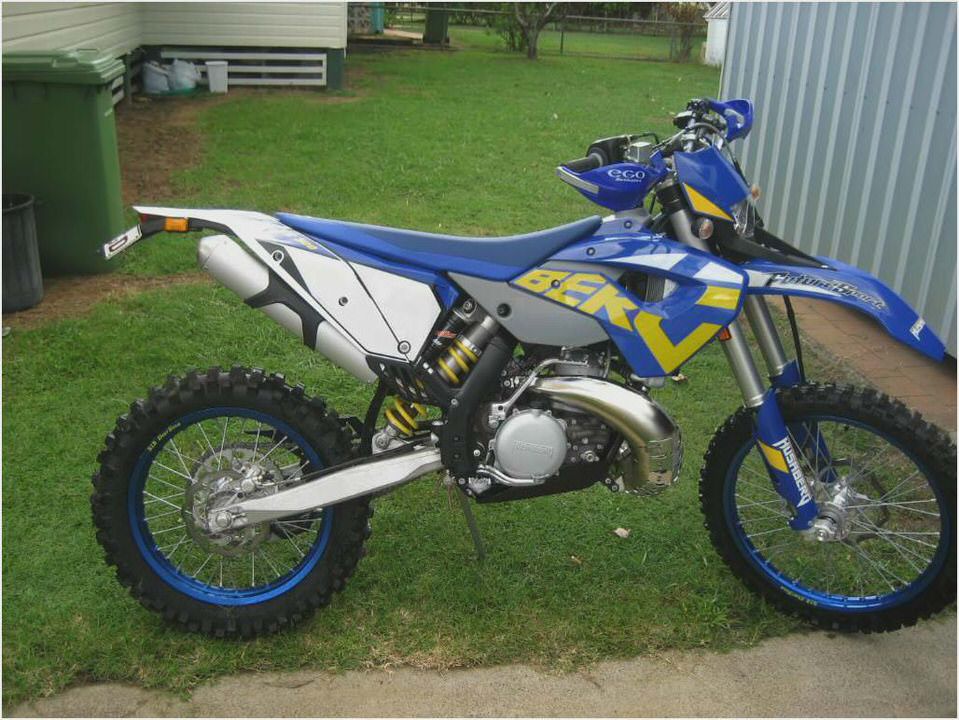
Surely by now you have read our King of the Motos/Graham Jarvis tales. This is the same bike. With the race over and Graham on his way back home, we cleaned up the Berg and headed out riding. After an event as grueling as KoM, one might expect the Berg would look worse for wear. But Graham is such a smooth rider, that he did very little damage to the bike.
With a clean air filter, oil change and new rear tire, the 300 was ready for action again. For comparison we took our FE350 four stroke along too.
These days I spend most of my time riding four strokes, it is just one of those facts of life. Getting back on the 300 takes just a little bit of adjustment. The first impression is how lively the bike feels. It responds to everything quicker.
The suspension is always dancing a bit, as is the front end. It takes a little time for me to find my two stroke rhythm again. It is not a bad thing; actually it is entertaining and sort of a fun challenge.
At first, the power delivery seemed overly harsh. Then I remembered that Graham had played with the powervalve preload adjustment some. It was the only real performance change that he used.
He even raced with the stock jetting. So I did some trailside tuning to turn the adjuster back in (clockwise). This adds tension to the spring and it requires more force to open the powervalve.
The effect is to calm the power down.
I confess to not taking a very scientific approach to the matter, I just went in a couple of turns. It probably ended up with more preload than stock. But everyone was happy with the result for tight trail conditions.
Technically there is a special tool for this job that you can purchase, but many blunt objects can be forced into the square hole in an emergency (4mm allen key). With this adjustment, the power of the 300 felt very close to the 350 in many ways.
After a day of riding fantastic mountain trails, the TE300 succeeded in putting a smile on everyone’s face, particularly the most talented rider in the group. He seemed to think the 300 was a trials bike and had the confidence to try nearly any crazy rock or challenge on it.
As for me, I switched between the 300 and 350 a number of times. Initially I felt more at home on the FE350, but with time the 300 felt equally as comfortable. I will write a more detailed 300 vs 350 comparison soon.
As for conclusions, what can I say? Technically speaking, there is not really very much new in the world on 300’s. But then, who says they need anything more?
The newest Husaberg brings a number of small refinements and additions that make a very good bike even better. I had the privilege to watch Graham Jarvis race this bike. It is enough to make you believe that the laws of physics have changed. He does things that don’t seem possible.
More so, he does them in such a casual manner that they do not even appear particularly difficult.
Sadly, it just magnifies the realization, that it is the rider more so than the bike. Never the less, all the best extreme enduro riders in the world are currently choosing 300 two strokes to ride. Meanwhile, at the other end of the scale, the 300 is the bike of choice for many casual trail riders too.
Is there any other bike that is so well suited to such a wide range of riders and skill levels?
If you have a preference for the color blue, or just want to be a bit different from the rest of the crowd, you can’t go wrong with the TE300.
2013 Husaberg TE300 Test
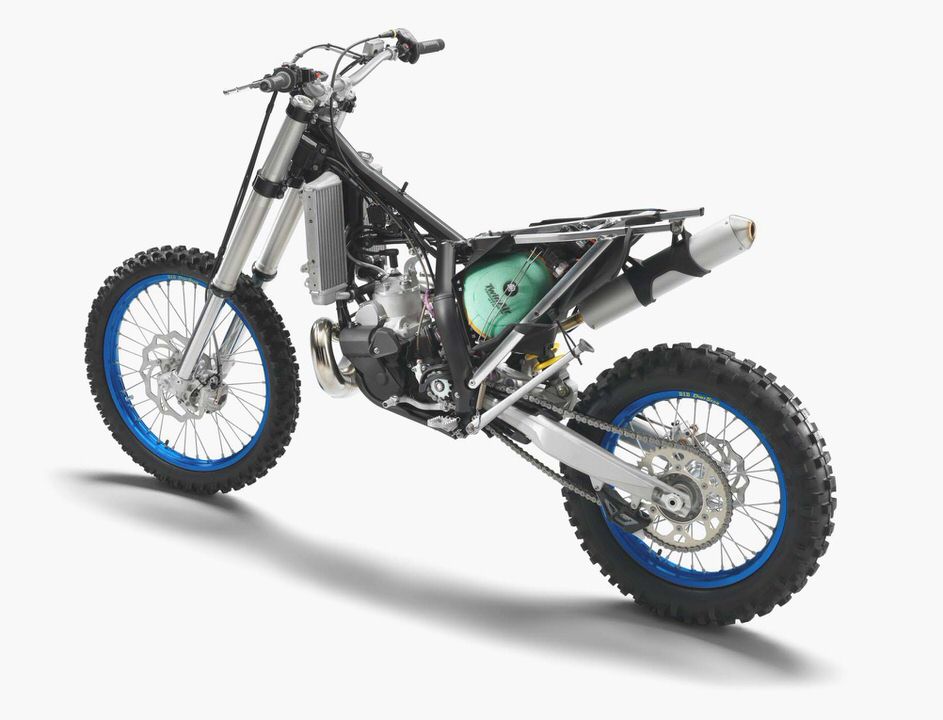
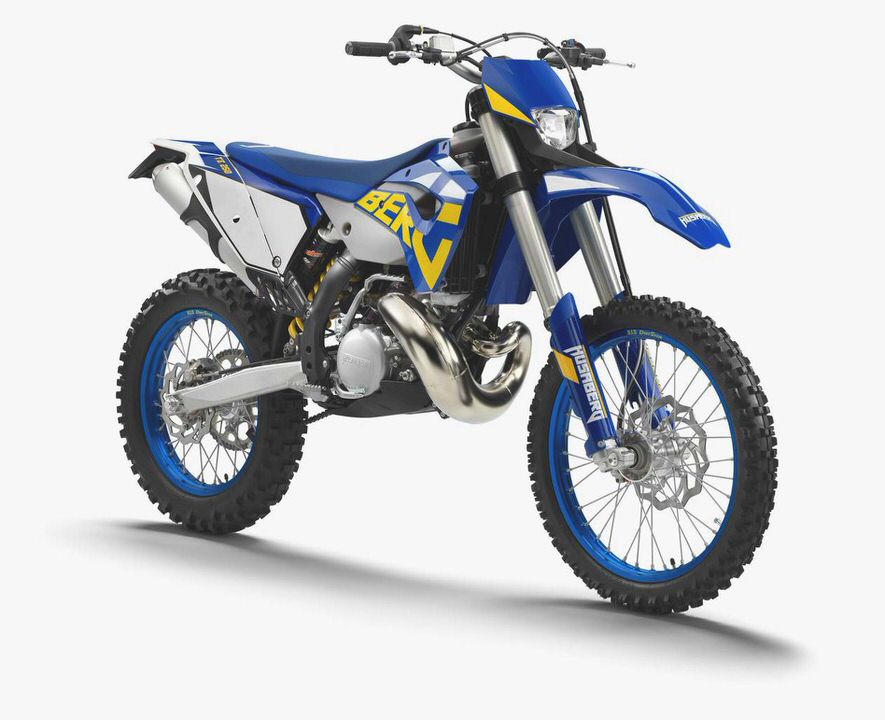
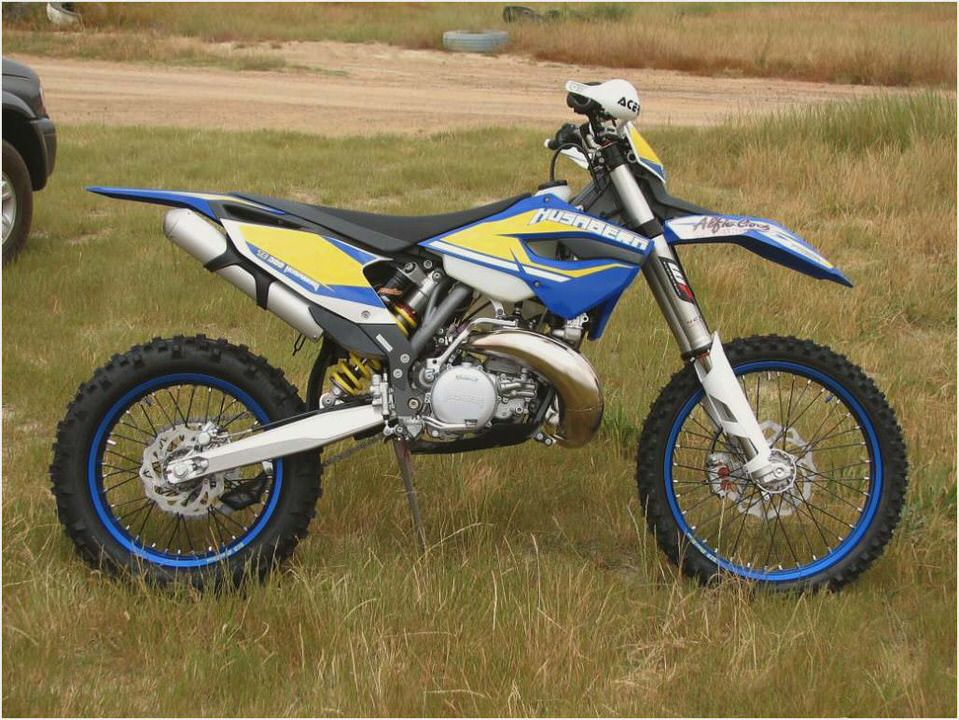
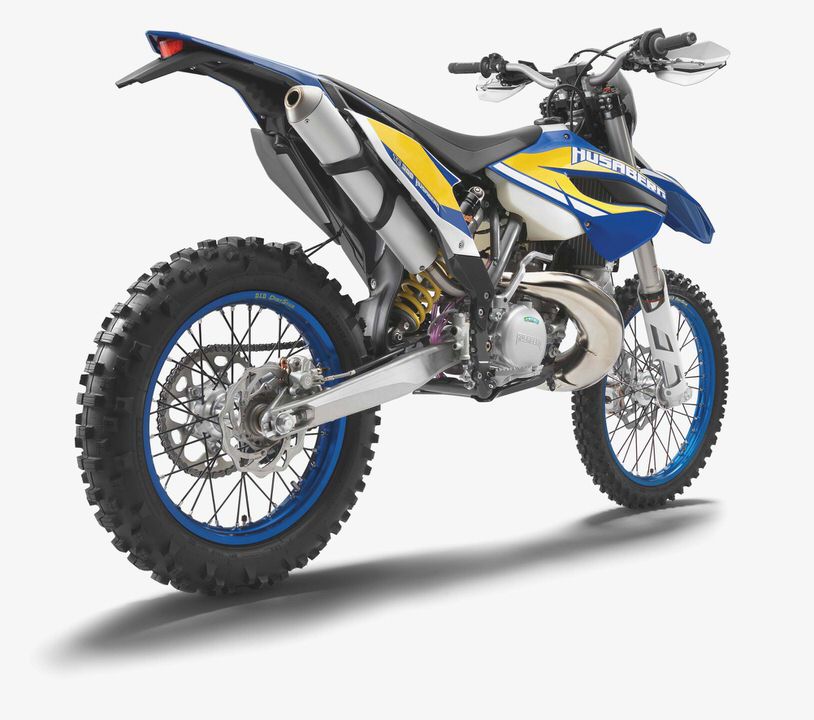
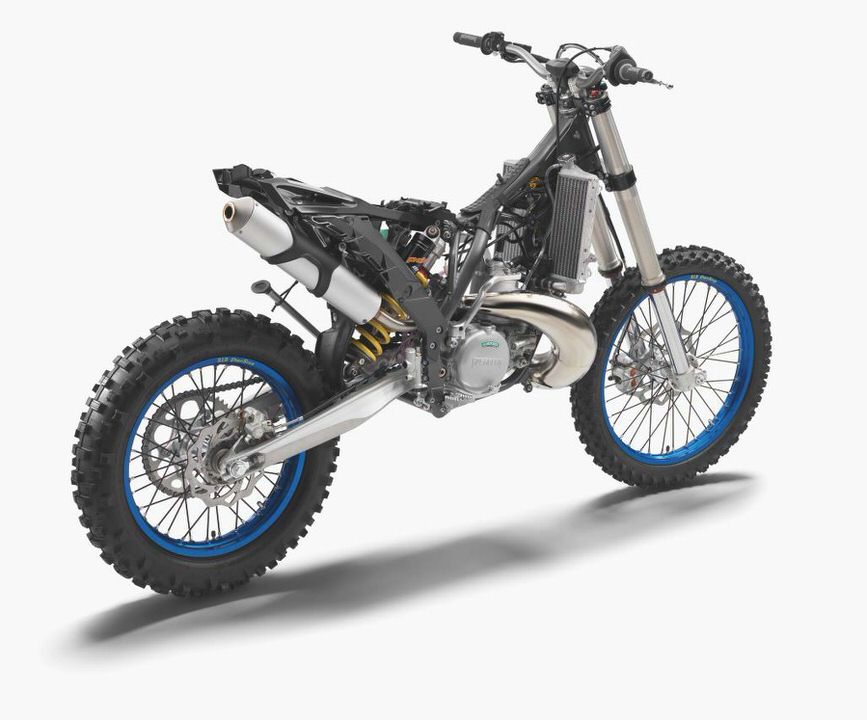

- 2013 Husaberg Motorcycles Lineup CPU Hunter
- 2013 Enduro Bike Comparison: Husaberg TE300 vs FE350 Enduro360.com
- Bikes Dirt Bike Rider Motocross News Magazine
- 2014 Husqvarna FC 450 Cross First Look Review & Stats
- 2014 Husaberg Lineup Announced – Final Edition Before Husqvarna Merger…
